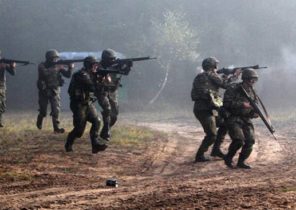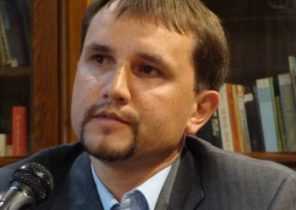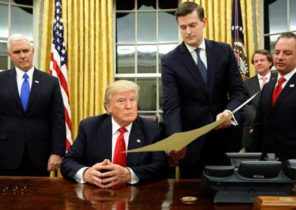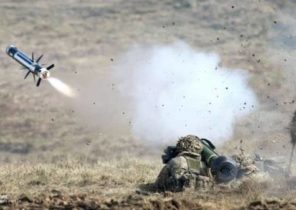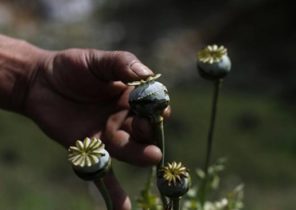
“I hate this landscape,” says continuously Smoking man with long grey hair hidden under the beret.
A man stands on a barge which floats on the Kolyma river, flowing into the Arctic ocean. On the banks of an endless belt drawn low and rough larch forests.
These landscapes could be called pristine nature, but the world-famous Russian ecologist Sergey Zimov calls them a result of environmental disaster, which provoked the people.
“In the forest you will not see any large wild animal, because there is nothing there. Before the arrival of the man here did not grow any forests, no moss. I want to destroy this forest.”
The destruction will take part, and ten Jacob, who calmly munching hay in the container. Yaki purchased a crowdfunding company Kickstarter, and they are already three weeks are in the way from the border of Mongolia to the polar Siberia.
Barge Noah’s ark Sergei, step to fulfilling the great mission zimova. He wants to gradually restore the Siberian North, the Savannah and with the help of large herbivores to turn her into the wilderness, where grass is hay.
Theory zimova was presented in 2015, the newspaper Helsingin Sanomat dedicated to science. What it is: large herbivores themselves support they need pasture and ecosystem. Because animals eat a lot of grass and trample the surface of the earth, the trees and shrubs do not capture territory. Producing manure, the animals quickly start the turnover of nutrients.
The steppes of Siberia were covered with forests, the disappearance of mammoths and other large animals.
Reminds of that period fertile loess layer with a thickness of 25 meters, which remained under the top layer of the soil. The loess is in the permafrost, which in these places reaches a depth of 600 metres.
Tugboat pulling a barge up the narrowing tributary of the Kolyma river and pushes it on the overgrown shrub shore.
We are at Pleistocene Park, Zimov which was founded here in the tundra 20 years ago.
The purpose of the creation of the Park — to try in practice to turn the forest into a steppe. The Pleistocene is a glacial epoch, during which half of the surface of all the continents were a pasture for grazing animals.
From the barge to the shore throw a wobbly bridge, but the yaks don’t realise you’ve arrived. When the container door open, Jacob has to get out. Son Sergei, a 37-year-old Nikita Zimov, removes the skittish Yak on the bridge by the horns.
For animals fenced off in a small clearing, which should be sufficient sustenance for the day.
“This is the first worms appeared in the Arctic circle after 14 thousand years”, — proudly says 62-year-old zymes.
In June it is difficult to obtain a complete picture of the Pleistocene Park, because most of the meadows flooded with water.
On bumpy terrain still growing marsh bagulnik, but the grass grows. It pinched, and here and there lie heaps of manure, there is life.
“Popopo,” the farmer calls the Glory of Moses, and to him he runs a herd of reindeer from 20 goals.
Then comes towards lone surly bison, chewing the leaves.
According to Nikita zimova, currently grazing in the Park more than 80 animals: reindeer, moose, Yakutian horses are hardy and three musk ox.
The new pet — borne hunters, the calf, which the Glory of Moses water from a bottle with a nipple.
The impact of animals, according to zimova, obviously.
“Fifteen years ago, there was the impenetrable forest. The grass begins to grow as soon as the surface of the earth is damaged. The soil dries out and is compacted, because the grass needs a lot of water. The oxygen penetrates deep into it.”
Zimov hopes not only to help animals but destroys the forest itself using the technique of crawler.
The mammoth steppe it is necessary to return, because it is the duty of man to nature. The disappearance from Siberia mammoths, bison, and woolly rhinoceros occurred not because of climate, and was the result of human activity.
However, the project has another goal: slowing the process of climate change.
Zimov estimates that permafrost is 500 gigatons of carbon, 2.5 times more than in tropical forests. If the permafrost starts to melt, the atmosphere highlighted carbon dioxide and the more potent greenhouse gas methane.
According to zimova prevent thawing of permafrost by using large herbivores.
In winter, the animals eat the branches and dug out the grass from under the snow. At the same time they trample down the snow, and he protects the earth from freezing. The earth, according to zimova, pastures freezes more than in the woods. Summer grass lighter woods and mosses and collects less solar radiation.
In the quest zimova is a contradiction, because the return of the mammoth steppe it is partly counting on global warming, which he is trying to prevent.
It shows an experimental plot where the forest cleared, and topsoil removed by the backhoe. Ice veins in permafrost melted, formed deep gaps, and bare loess.
If the landscape will be restored, the recovery process step will accelerate.
The idea zimova contained in the Manifesto of the Pleistocene Park in the Internet
To get started you want a network of parks, a few thousand animals, such as bison, horses, musk oxen, bighorn sheep and antelope. According to his calculations, square kilometer steppes can feed 20 large herbivores and a few carnivores.
In the end, we can talk about millions of animals. According to the calculations zimova, on the territory of Russia would be enough space for 300 million large herbivores.
“It is not a utopia. In recent years Russia has imported from abroad a million head of cattle”.
Because in Russia there are huge amounts of carbon the permafrost and most of unused land in Russia can, according to zimova, to decide the fate of the world.
The brainchild zimova is located 45 kilometers from the Park’s North-Eastern research station, which actively cooperates with the West, including with the Finnish scientists. His theory zymes presented in the publication Science.
Unlike traditional Western researchers, he is not afraid to speak out and are actively developing their own hypotheses.
For the future of humanity looks bleak zymes.
“It is a civilization of non-renewable natural resources. Metal already recovered from a depth of three kilometers. Oil production will only increase. Soil is depleted. When the resources run out, quickly will come the collapse of modern civilization. Then the globe will live much fewer people.”
This would be good to prepare for developing the self-regulating ecosystem.
In 20 years the number of animals in the Pleistocene Park is not increased. As a little animal, the formation of pastures is slow. In winter, animals have to feed.
According to zimova, almost half of the imported animal dies in the first year. Bison killed the elk, bears, horses, and Wolverine — reindeer. Horses died from eating poisonous milestones. Three animals died from mosquito bites. The part is not moved to the winter.
Now the Park still celebrate a happy family event: Yak, brought on a barge, there was the offspring.
“We were assured that none of them are pregnant,” says Nikita Zimov.
Calf hiding under her mother and sucks milk. For four days the paddock was completely trampled and gnawed. We’re one step closer to Yak to translate theory into practice.
“Two weeks from now will grow grass,” says Sergey Zimov.
